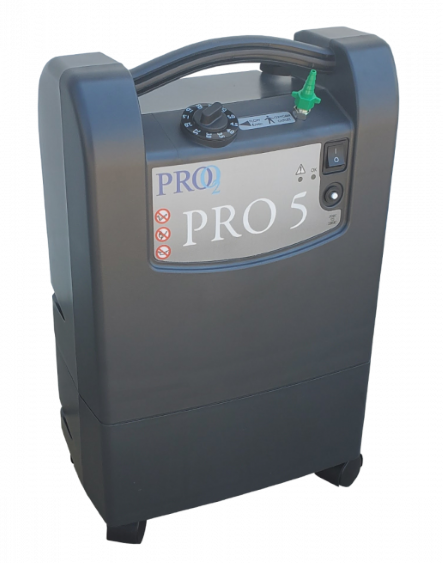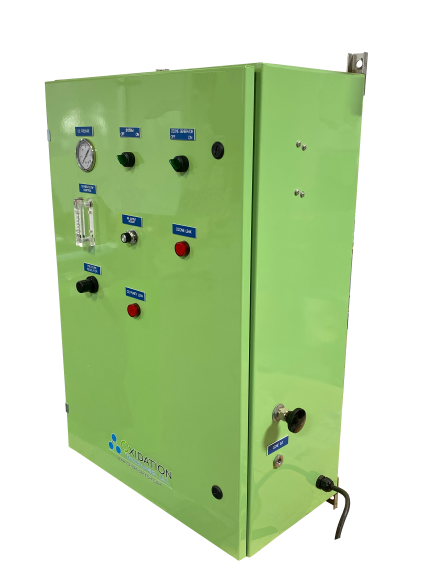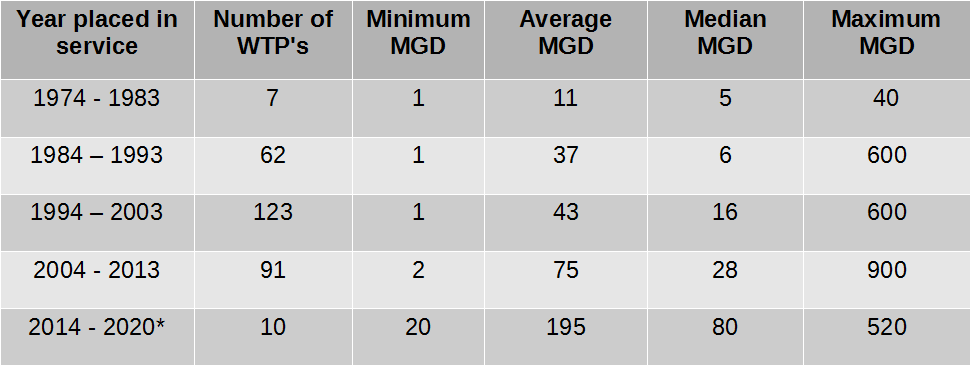Ozone Generation: Air Feed
Air is one method for ozone generation. The ozone concentrations achieved by using air as the feed gas are low. The maximum concentration achievable with the best technology is 5%. The effectiveness of the ozone however, is not in anyway inferior to the effectiveness of ozone produced with oxygen as the feed gas.
The process requirement is what determines whether you should use air or oxygen as the feed gas. The rule of thumb is: the larger the volume of water, the more volume of gas is required and therefor air is most suitable. E.G. municipal water ozonation. The lower the volume of water, the better it is to use oxygen as feed gas. E.G. waste water treatment.
The effectiveness of ozone is governed by Henrys law, Chicks law, etc., in most cases. Air only contains 21% oxygen and requires 4 times the volume of air to generate the same quantity of ozone as oxygen being the feed gas. For large requirements of ozone, like for industrial applications such as effluent treatment, processing etc., ozone is best produced with oxygen. The total costs of ozone generation for large doses of ozone will be much lower for ozone produced with air instead of oxygen. For smaller requirements of ozone, production with air will be more economical than with oxygen.
Calculations
Molecular weight of air: 1293 (1 m3 of air weighs 1293 grams) Air Feed 1% ozone concentration: 1293 x 1/100 = 12.96 g/m3 of air 2% ozone concentration: 1293 X 2/100 = 25.86 g/m3 of air 3% ozone concentration: 1293 x 3/100 = 38.79 g/m3 of air 4% ozone concentration: 1293 x 4/100 = 51.72 g/m3 of air 5% ozone concentration: 1293 x 5/100 = 64.64 g/m3 of air
Oxygen Feed
It may be better to use oxygen as feed gas in areas that water quantities are low. That way the gas quantity will be low and easily manageable, the high concentration are likely to increase ozone dissolution, per Henrys law.
Molecular weight of oxygen: 1428 (1 m3 of oxygen weighs 1428 grams)
Oxygen Feed
6% ozone concentration: 1428 x 6/100 = 74.88 g/Nm3 of O2
7% ozone concentration: 1428 x 7/100 = 99.96 g/Nm3 of O2
8% ozone concentration: 1428 x 8/100 = 114.24 g/Nm3 of O2
9% ozone concentration: 1428 x 9/100 = 128.52 g/Nm3 of O2
10% ozone concentration: 1428 x 10/100 = 142.80 g/Nm3 of O2
11% ozone concentration: 1428 x 11/100 = 157.08 g/Nm3 of O2
12% ozone concentration: 1428 x 12/100 = 171.36 g/Nm3 of O2
It is very difficult to economically produce 13% concentration and beyond. Since the higher the concentration the power is consumed and at 13% this becomes disproportional to be economically viable.
The converse calculations will be used to determine the quantity of air/oxygen required to produce ozone at a predetermined concentration of ozone.
Let us assume that you want to produce ozone say 2000 grams of ozone at 8% concentration with oxygen as feed gas. Then the quantity of oxygen required will be: (2000/0.08) / molecular weight of oxygen: i.e. = (2000/0.08)/1428 = 17.5 m3 of oxygen /hour. You will than design the oxygen plant accordingly. Of course, you will adjust the quantity based on the purity of oxygen and atmospheric pressure.
Please follow these links to browse our collection of Ozone Generators and Oxygen Concentrators.




Hi,
Do ozone generators that hook up to a o2 tank need more safety features such as o3 concentration sensors or other safety features in their controller circuit boards, than the ozone generators that are made to ozonate ambient air only?
If the only difference between ozone generators is the feed-gas, then no. There are no other safety precautions required.
Certainly an ambient ozone sensor should always be used for human safety, and water traps, check valve, or pressure sensors may be required when ozone is dissolved into water. however, all these parts should not change based on feed-gas alone.